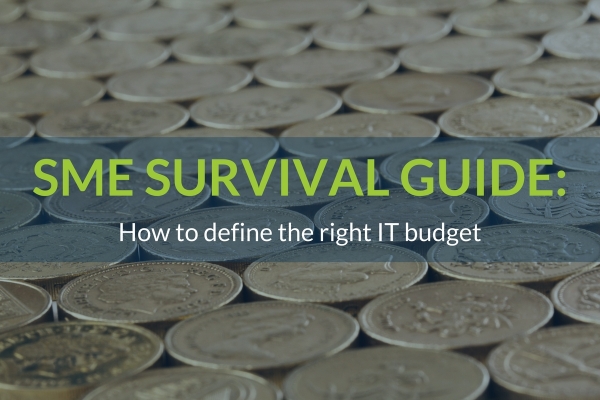SME survival guide: How to define the right IT budget
All businesses need computers and other technology, but how do you decide how much to spend? Do you plan ahead, set a strict budget and stick to it? Or do the sometimes unexpected costs of equipment and services creep up on you?
As we prepare for the start of a new financial year, now is a good time to check where you are with your costing – and how you could be more effective and efficient in this area. The success of your business depends on sound budgeting across the board, linking to your overall goals and objectives, so wise owners and managers make this a priority.
Do you have an IT budget?
Many businesses don’t ringfence money for technology and IT services. Is this you? If so, then maybe now is the time to start.
Even if – up until now – your tech funds have come from a central pot, you should still be able to track how much you’ve spent before. If you can go back one, two, three or more years, you will probably see a trend, and therefore be able to more accurately forecast how much money you will need in 2018/9.
As Tech Donut points out, if you set budgets for other specific areas of your operations, you can transfer your knowledge and experience of this process to the area of IT – the principles will be the same.
Set aside enough time to get this important task right – and when your budget is established, don’t forget to check your outgoings every month, at least briefly, so that you can adjust your planning accordingly.
What should your budget cover?
Should your budget include staff salaries, or are they covered in another area of operation? How about hardware, software or training? Should the budget include any external expertise, whether that is to provide regular or ad hoc support?
The choice is yours, but the scope – and any divisions within it – must be clear from the outset in order for your budget to be effective. As with any business decision or development, it’s important to consult colleagues and get their get buy-in before you proceed. Asking them for input will pay off in the long run, as collective expertise and ideas will only strengthen your plan.
Setting budget levels
The cost of maintaining your current equipment – from computers and tablets to servers – as well as investing in new software and cloud services, will probably figure prominently in your budget. Don’t forget any monthly fees or subscriptions.
You will also need to factor in routine upgrades and the costs associated with these. Remember that the typical lifespan of a computer is just three to five years, and even shorter for tablets. However, developments in cloud services are generally included in your contract.
If you have a good relationship with a supplier or support company, run your figures past them. Their input could be really helpful and highlight any areas you have overlooked.
Looking ahead to the future
There is also the question of what you would like to buy next. As technology changes, new devices and services could offer some real business benefits that you may want to invest in. It’s crucial to not only remember the cost of setting these up, but also what it takes to look after them effectively.
If systems are bespoke to you, they might need testing and trialling – all of which costs money. Consider too, whether you are setting aside enough for security software and – in readiness for a worst-case scenario – possible disaster recovery. Backing up files in preparation for a potential data loss – whether as a result of human error, system failure or a cyber-attack – is not only vital for keeping your business operations running smoothly, but also for remaining compliant with the GDPR.
Are you planning to expand? More employees certainly means more computers and greater training needs – plus the potential need for additional storage, as your data requirements grow.
You may also want to think about whether you are doing enough horizon scanning. This requires you to take wider developments in your sector into account, and work out what tech is needed to retain your competitive edge. If you’re falling behind others in your field, it might be a sign that your systems need a bit of a boost.
Finally, setting or revising a budget is a brilliant opportunity to check that you are spending as efficiently as possible. Is it more cost-effective to handle IT support in-house, or could using external experts save you some money?
If you want to find out more about IT budgeting and how Q2Q could help, contact us!



